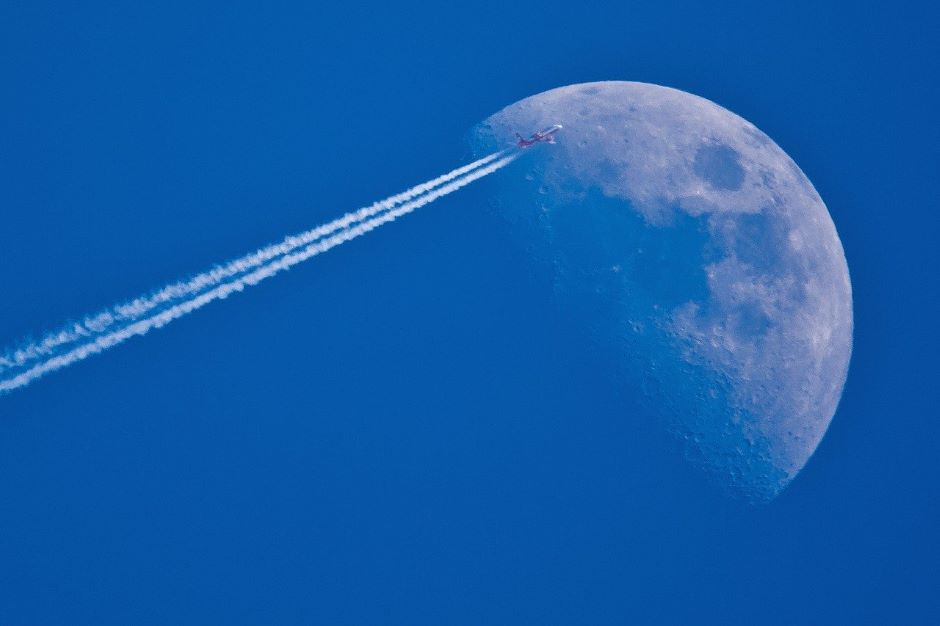Heat is the limiting factor for engine parts. High temp parts, such as high pressure turbines and augmentor ducts are often cooled with air to allow higher gas temperatures without overheating the materials. The F110 pictured previously has hollow HPT blades with holes in them to allow cooling air to pass through them.
You are using an out of date browser. It may not display this or other websites correctly.
You should upgrade or use an alternative browser.
You should upgrade or use an alternative browser.
How do airplanes go so fast?
- Thread starter Cujet
- Start date
It did in the Tomcat F110-400, longer "augmenter" can and new scheduling in the HMU and analog engine control. Good memories from the beginning of my career at GE. After >33 years in the electronic engine control business I'm still in awe about the sheer power and mass quantity of air and compression these engines achieve. About the only thing that fascinates me more is the Saturn rocket F-1 engine turbopump.Wasn't that the engine that was supposed to replace the PW TF30?
Last edited:
Our R/C Dynamic Soaring gliders have achieved 500+MPH by exploiting wind gradients created simply by wind hitting a hill.Of course, that's cool for an RC plane, but 290Kph/180 MPH is not fast in the real aviation world (my Cessna Cardinal was flying that fast yesterday). Additionally, RC planes (for the most part) don't have to fly at high altitudes, carry a load or fly for exceptionally long distances. RC planes can have energy dense propulsion systems (battery or fuels) and be otherwise very light weight.
I believe in the future it may be possible to exceed the sound barrier using wind shears at higher altitudes.
It did replace the TF30 in the F-14. It is the alternative engine for the F-16 which originally had a P&W F100.
Yeah. It was my understanding that the TF30 was really meant for the F-111. What was the problem - compressor stalls followed by the extremely wide layout of the engines?
As does copious amounts of “military grade aluminum”Nitrogen in the tires makes the planes go fast.
MolaKule
Staff member
Here is a turbine engine design question.
Since the turbine blades are stressed by both heat and centrifugal forces, what methods are used to mitigate
blade-tip-rub against the annulus?
Since the turbine blades are stressed by both heat and centrifugal forces, what methods are used to mitigate
blade-tip-rub against the annulus?
For the ones I worked on the HPT tips wore into the shroud and the LPT tips wore into a honeycomb seal.Here is a turbine engine design question.
Since the turbine blades are stressed by both heat and centrifugal forces, what methods are used to mitigate
blade-tip-rub against the annulus?
There is "military" grade aluminum in my Ford pick up , that must be the reason it seems to go fast
But aircraft engines do use special alloys. I took an entry level materials engineering class where the professor talked a lot of about the "superalloys" that went into turbine blades. Of course the secret sauce these days is "single crystal" turbines blades that can withstand considerably higher heat. Basic efficiency is 1 - (Tambient / T). So the hotter you can get it, the more efficient it's going to be. That supposed to be what makes super cruise (going supersonic without afterburner) possible in many 5th gen aircraft. My understanding is that PW, GE, and maybe Rolls have mastered it. Others have tried and I understand that typical yield is lower.
Last edited by a moderator:
Active clearance controlHere is a turbine engine design question.
Since the turbine blades are stressed by both heat and centrifugal forces, what methods are used to mitigate
blade-tip-rub against the annulus?
MolaKule
Staff member
Some of the methods that my be used singly or in combination are: single crystal alloy blades that have almost zero expansion coefficients, air flow through and over the turbine blades. and controlled air temps around the turbine's annulus.
I worked at Kaiser Aluminum back in the mid 1980's and we rolled sheet and fabricated plate for airplane applications among many other products. Even then there were some exotic alloys being produced. IIRC we had reject rates of about 90% on some special alloys. Hard to make and still test within parameters. I imagine the metals science has advanced a fair stretch in the last 35 years.
I worked at Kaiser Aluminum back in the mid 1980's and we rolled sheet and fabricated plate for airplane applications among many other products. Even then there were some exotic alloys being produced. IIRC we had reject rates of about 90% on some special alloys. Hard to make and still test within parameters. I imagine the metals science has advanced a fair stretch in the last 35 years.
I always wondered about that. In that materials science class I took, the prof talked about the typical aluminum aircraft fuselage, which has a cross section equivalent to an aluminum beverage can. Of course an aluminum beverage can is a different alloy that's easy to turn into a can.
That was a fun class. There was a lot about strength, ductility, toughness, hardness, etc. We had a few labs where ingots of metal were stretched until they broke. Also some stuff exposed to liquid nitrogen.
Goofing around with toy airplanes.
edit: adding a couple links to articles.

 www.planeandpilotmag.com
www.planeandpilotmag.com

 newatlas.com
newatlas.com
edit: adding a couple links to articles.

New All-Time Speed Record Using A Really Weird Method
New Speed Record made Using dynamic soaring. The concept is pretty simple, though its application to human-piloted craft is inadvisable.

World's fastest RC aircraft hits a stunning 548 mph – without a motor
No props, no jets, no rockets – California's Spencer Lisenby just broke the world speed record for remote controlled aircraft, taking an unpowered RC glider transonic at 548 mph (882 km/h) using nothing but the wind. Well, that and an incredible degree of skill in a highly dangerous technique…
Last edited:
Cujet
Thread starter
Our R/C Dynamic Soaring gliders have achieved 500+MPH by exploiting wind gradients created simply by wind hitting a hill.
I believe in the future it may be possible to exceed the sound barrier using wind shears at higher altitudes.
I've seen that done at Wasserkuppe, Germany, it's amazing in person, difficult for the inexperienced to visually follow and sounds really neat.
However, it's not really relevant to our discussion here. The glider in question is using gravity to achieve high speeds. The skilled pilots fly in circles in an updraft.
In a much more simple version, any pilot knows high speed has always been possible in a rapid descent. Gravity is not limited by velocity and a stable falling object experiences 1G regardless of velocity. Consider that 1G of thrust in a straight down descent.
Getting a powerplant to efficiently produce sufficient discharge velocity to create adequate thrust to both overcome drag and for the wing to produce sufficient lift, for sustained high speed flight is not an easy task. In fact, it took 50 years to develop into something workable.
There's still terminal velocity which will limit the speed due to aerodynamics of the falling body.In a much more simple version, any pilot knows high speed has always been possible in a rapid descent. Gravity is not limited by velocity and a stable falling object experiences 1G regardless of velocity. Consider that 1G of thrust in a straight down descent.
Sorry hot combustion is not allowed anymore. Too much NoX, can have turbine pollution can we.But aircraft engines do use special alloys. I took an entry level materials engineering class where the professor talked a lot of about the "superalloys" that went into turbine blades. Of course the secret sauce these days is "single crystal" turbines blades that can withstand considerably higher heat. Basic efficiency is 1 - (Tambient / T). So the hotter you can get it, the more efficient it's going to be. That supposed to be what makes super cruise (going supersonic without afterburner) possible in many 5th gen aircraft. My understanding is that PW, GE, and maybe Rolls have mastered it. Others have tried and I understand that typical yield is lower.
Cujet
Thread starter
Sorry hot combustion is not allowed anymore. Too much NoX, can have turbine pollution can we.
As mentioned above, high temperatures can be achieved other ways. Compressing the air via multiple stages is one way. It's terribly inefficient and energy intensive. Electrically heating the air into a superheated plasma is another way. The Chinese have been experimenting with this. It's also exceptionally energy intensive. Will require amazing batteries

Chinese researchers create prototype plasma jet engine - Asia Times
Mankind has moved a step closer to carbon emissions-free air travel, as Chinese scientists have now developed a prototype jet engine that uses air plasma
 asiatimes.com
asiatimes.com

Plasma jet thrusters make push for propulsion | The Engineer
Researchers have demonstrated a microwave air plasma jet for propulsion, an advance that could one day replace fossil fuel combustion engines.

Similar threads
- Replies
- 83
- Views
- 9K
